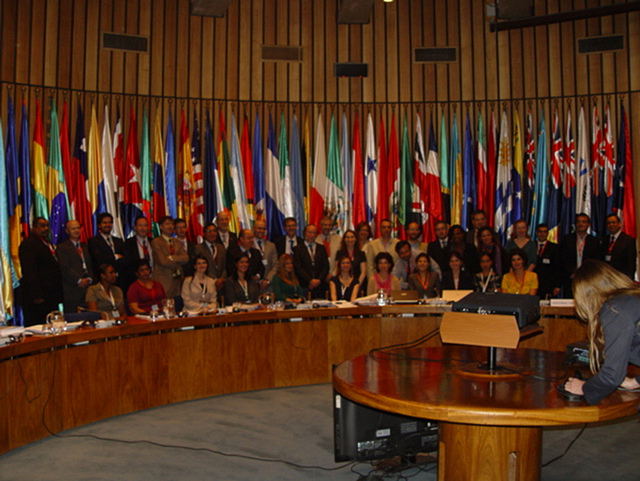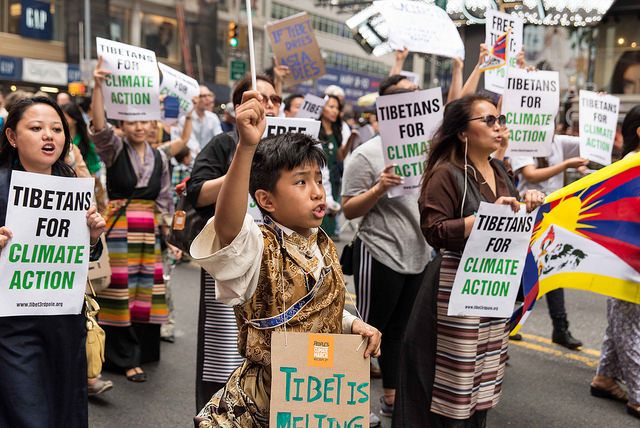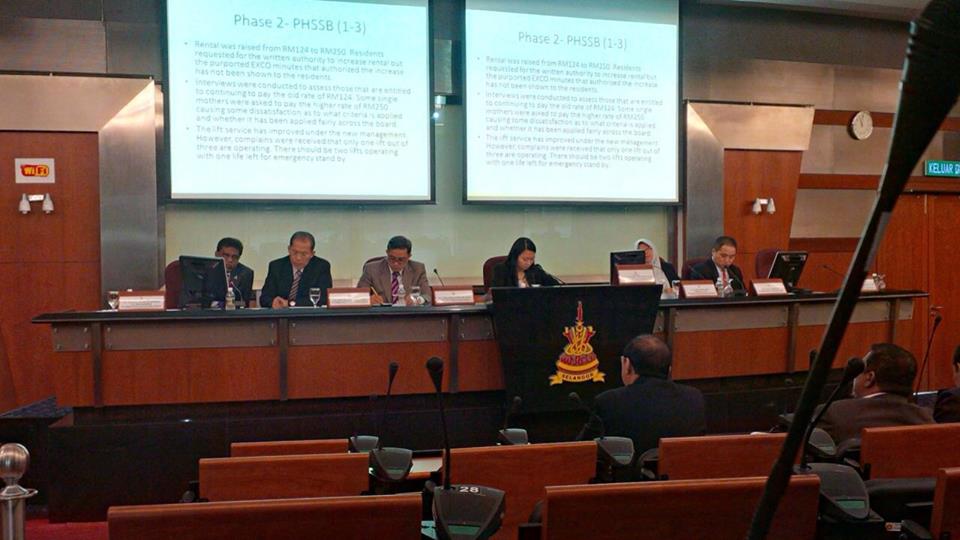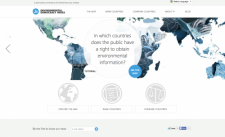Published: 2016


Published: 2016

This blog was originally posted on WRI Insights on June 11, 2015.
By Nicholas Tagliarino and Lalanath de Silva
WRI and the Access initiative (TAI) recently launched the Environmental Democracy Index (EDI), the first online platform that tracks and scores 70 countries’ progress in enacting national laws that promote transparency, accountability and citizen engagement in environmental decision-making. These three “environmental democracy” principles are foundational elements for sustainable development and for ensuring basic human rights. While EDI resulted in a comprehensive ranking of countries, the story doesn’t end there. Truly evaluating environmental rights in countries around the world is a lot more complicated than one might think.
The Environmental Democracy Index
EDI assesses national laws against a set of 75 legal indicators designed to show whether a country’s laws conform with the UNEP Bali Guidelines, a set of principles meant to guarantee environmental democracy. EDI’s scores provide insight on the best and worst countries for environmental democracy. National laws establish a foundation on which environmental advocacy can take place. Laws often provide the public and the environment with a set of guaranteed protections. They also serve as a point of reference when the public wishes to challenge government and private actor decisions that harm the environment. While the legal language of environmental democracy laws is important to assess, it also matters whether these laws are actually being implemented, and if there is an enabling environment for citizens to fully capitalize on opportunities set out in these laws. This more comprehensive assessment of environmental democracy depends on broader questions, such as: Are laws enforced and respected in a particular country? Are governments behaving corruptly? Is there an enabling environment for citizens to exercise these rights? Are human rights being violated? EDI has a limited set of 24 practice indicators that provide insight into discrete aspects of law implementation, but these are not yet comprehensive, and practice indicator scores are not accounted for in EDI countries’ overall scores. Viewing EDI’s results together with other global indices provides deeper insights on the extent to which environmental democracy is practiced around the world.
Other Assessments of Environmental Democracy
Transparency International’s 2014 Corruption Perception Index (CPI) assesses public perception of government corruption at the national level. When combined with EDI results, this index sheds light on whether corruption might be undermining the practice of environmental democracy. For instance, Russia, Colombia and Panama ranked in the top 10 on EDI, but in the bottom half of the 175 countries CPI assessed (Russia ranked 136th, Colombia and Panama ranked 94th). These results suggest that corruption levels are perceived as high in these nations, which may undercut national environmental democracy laws. On the other hand, seven of the top 10 EDI countries (Lithuania, Latvia, United States, South Africa, United Kingdom, Hungary and Bulgaria) ranked in the top half of the CPI; the United States and United Kingdom ranked in the top 20. Corrupt governments may be less likely to disseminate environmental information to the public or consider public feedback in environmental decision-making. With lower corruption levels, these countries may be more likely to achieve environmental democracy. Environmental democracy laws are also more likely to be implemented in countries where the law is respected and enforced equally. The World Justice Project’s Rule of Law Index (ROLI) uses survey research to determine how well the laws are respected and enforced (rule of law) in everyday life around the globe. Russia, Colombia and Panama—top-ranked countries on EDI—ranked in the bottom half of the 99 countries ROLI assessed, while the United States and United Kingdom ranked in the top 20. Comparing EDI and the ROLI rankings provides insight on whether countries are likely to follow laws that recognize environmental democracy rights. Environmental democracy rights are also rooted in basic human rights. For instance, the right to free speech must be realized before the public can meaningfully participate in environmental decision-making. Maplecroft’s Human Rights Risk Atlas 2014 (HRRI) rates countries based on their susceptibility to human rights abuses, such as torture, illegal arrests and freedom of speech. Whereas the United Kingdom is rated as having low human rights risks, Russia and Colombia are rated as “extreme risk,” meaning there is a high likelihood of human rights violations in these countries. Until human rights are better respected in Russia and Colombia, it is unlikely that citizens will fully attain the environmental democracy rights that national laws set out.
Improving Environmental Rights Around the World
Because protection of the environment and human rights share common ground, EDI holds an important place among global indices that address human rights concerns. Ultimately, what EDI and these global indices have in common is they establish a benchmark for progress: EDI shows the current state of national environmental democracy laws, the starting point for ensuring citizens’ rights to information, public participation and justice. Other global indices show us whether an enabling environment exists that will allow environmental democracy laws to be fully implemented. It’s important to examine both sides of the coin—the existence of laws as well as their enforcement—so that citizens can exercise their environmental democracy rights and hold governments and private actors accountable.

The main objective is to create networks of NGOs/CSOs that will leverage on each other strength while synergizing on its purpose. Pilot projects initiated under this campaign will always focus on creating a strong value chain between all actors that will institutionalize solutions between NGOs, Communities, and Local Governments. This network will provide a stronger advocacy voice that will result in better policies and action plans by authorities and government.

By Jesse Worker (Posted: May 20, 2015)
The environment and human well-being are inextricably linked. When governments, businesses and others make decisions about land and natural resources, they inevitably impact the health, livelihoods and quality-of-life of local communities. So it stands to reason that the public should have a right to be involved in environmental decision-making—specifically, to know what is at stake, to participate in the decision itself, and to have the ability to challenge decisions that disregard human rights or harm ecosystems. These three fundamental rights are known as environmental democracy—and not all nations provide it to their citizens. The new Environmental Democracy Index (EDI) is the first-ever online platform that tracks and scores 70 countries’ progress in enacting national laws that promote transparency, accountability and citizen engagement in environmental decision-making. The analysis, based on 75 indicators, identifies the best and worst countries for environmental democracy. The results may surprise you.
The Top Countries with Strong National Laws for Environmental Democracy
The top three countries are all former Soviet states—Lithuania, Latvia and Russia. Many of their relevant national laws were enacted as part of democratization reforms in the 1990s and the United Nations Economic Commission for Europe’s (UNECE) legally binding Aarhus Convention on access to information, public participation and access to justice in environmental matters. Lithuania and Latvia have both ratified this convention and strengthened their legislation after doing so, such as Lithuania’s amendments to its Law on Environmental Protection and Latvia’s passage of its Environmental Protection Law. Russia in particular may stand out to some as surprising, especially in light of several environmental activists recently fleeing the country out of fear for their freedom and safety. Therein lies a powerful lesson: Countries’ national laws may be quite progressive on paper, but the enforcement of those laws is oftentimes weak or subject to corruption. All of the top 10 performers have statutes to support the public’s right to access government-held environmental information such as forestry management plans or mining permits, and all of them require at least a majority of government agencies to place environmental information like air and drinking water quality information in the public domain. While public participation scored the lowest across the index, all of the top 10 countries provide the public with the right to participate in major, national environmental decisions, such as infrastructure projects, forest management planning, pollution permitting and more. Lithuania stands out for having the highest score on the justice pillar. Its Civil Procedure Code and Law on Environmental Protection provides for communities to bring environmental cases in the public interest. What’s also interesting about the top 10 performers is that wealth is not necessarily the defining factor of strong environmental democracy laws. Panama and Colombia are resource-strapped nations, and South Africa is an upper middle income country; nevertheless, they’ve committed to enacting strong environmental laws.
The Lowest-Scoring Countries for Environmental Democracy
Haiti, Malaysia and Namibia scored lowest on the index. Of the bottom 10 countries, some had right-to-information laws, but most lacked provisions requiring that government agencies proactively make environmental information public. In countries like Philippines, Republic of Congo and Pakistan, citizens need to go through time-consuming or expensive information requests to obtain crucial information like statistics on air or drinking water quality. The government may or may not honor these formal requests. Many of the bottom performers also lacked requirements on collecting environmental information and monitoring compliance. National governments in Ethiopia, Nicaragua, Guatemala, Bangladesh and Thailand do not actually ensure that factories, mines and other facilities aren’t harming people or the planet. And requirements for public participation in these countries are almost always limited to environmental impact assessments, leaving out other important decisions such as the development of forest management plans, protected area policies or environmental protection laws. One positive note is that even at the bottom of the list, Saint Lucia, Nepal, Sri Lanka and the Republic of Congo allow an individual to file lawsuits in the public interest. Otherwise, the right to challenge or appeal government or private sector decisions is not as well established in these countries.
There’s Room for Improvement Across the Board
Even in countries that scored relatively well, there’s still room for improvement. Almost 50 percent of the countries assessed, for instance, are not making real-time air quality data available online for their capital cities. And while nearly half of the countries require agencies to monitor environmental compliance, 64 percent of those with laws on the books do not release any information to the public on emissions or wastewater discharges, pollutants that can impact human health and the environment. And even if countries have strong laws on the books, it doesn’t mean that they are adequately enforced. EDI measured countries based on the existence of national laws, not implementation. However, supplemental to the legal index, EDI includes 24 indicators on environmental democracy in practice. These indicators are not comprehensive, but they do provide some key insights to allow some comparison with legal scores. National laws aren’t the only way to improve environmental democracy, but they’re an important first step. EDI can help governments who want to promote transparent, inclusive and accountable environmental decision-making by providing an index to benchmark progress, as well as examples of good practices from around the world. It’s time to give citizens a voice—for the good of the planet, and for the good of communities around the world.

By Daniel Barragan (Posted: November 19, 2014)
El inicio de esta negociación es una buena noticia para la región ya que significa que en el mediano plazo los países de América Latina y el Caribe (ALC) contarán con un instrumento para garantizar un ejercicio efectivo de los derechos de acceso y para una mejor canalización y resolución de los crecientes conflictos socio-ambientales, con el consiguiente mejoramiento de la gobernabilidad democrática.
Con el compromiso asumido el pasado 6 de noviembre en Santiago de Chile por parte de los Gobiernos de Latinoamérica y el Caribe, y que da vida a un comité de negociación de un instrumento jurídico internacional, la ciudadanía de la región está cada vez más cerca de contar con una herramienta de carácter internacional que garantice la aplicación efectiva de los derechos de acceso a la información, participación y justicia en asuntos ambientales. Los llamados derechos de acceso, esenciales para la protección de nuestros recursos naturales, la garantía de los derechos de las comunidades y el desarrollo sostenible de nuestros países.
Representantes de 19 países de América Latina y el Caribe firmantes de la Declaración del Principio 10 -que promueve los derechos de acceso a la información, participación y justicia en asuntos ambientales-, junto con representantes de los países observadores y actores de la sociedad civil, se congregaron en la Cuarta Reunión de los Puntos Focales designados por los gobiernos de los países signatarios de la Declaración sobre la aplicación del Principio 10 de la Declaración de Río sobre el Medio Ambiente y el Desarrollo en América Latina y el Caribe realizada del 4 al 6 de noviembre en la sede de la CEPAL en Santiago, Chile. Como resultado de esta reunión se aprobó la Decisión de Santiago, en la cual se incluyeron puntos fundamentales para la continuación de la negociación regional, entre ellos la adopción de los contenidos de San José (provenientes de la anterior reunión de grupos de Trabajo en Costa Rica), como índice de temas para la negociación del instrumento, la creación de un comité de negociación en el que se reafirma la importancia de la participación del público, y la inclusión de nuevos países en la Mesa Directiva encargada de dirigir el proceso.

Article by Alisa Zomer, Yale F&ES ’14 (Posted: November 10, 2014)
The murals and graffiti that define public space in Bogota give an impression of the country’s creativity, diversity, and struggle. Emerging from a period of political and social unrest, Colombia is enjoying a period of economic growth and positive international attention. As an example of what is possible, Colombia is the perfect place for civil society to gather from around the world to learn from one another, share strategies, and get energized to move on important environmental rights. This year’s gathering, hosted by Colombian Asociacion ambiente y sociedad, had 95 representatives from over 40 countries. It focused on the intersection between technology and forest management. A defining moment of diversity and group-think was during the exercise “Agree, Disagree, Unsure.” Participants came up with controversial statements (i.e. ‘using technology is necessary for environmental protection,’ ‘democracy does not work for the environment,’ ‘business must be part of the solution,’ ‘there is no sustainable mining,’) and were asked to take a position and discuss. It was valuable to see the wide range of positions on seemingly simple issues and especially interesting experiencing participants persuade others to join their side – all with appreciation and respect.
View the full story here: http://epi.yale.edu/the-metric/photo-essay-global-gathering-environmental-rights
Published: 2013
En el plano ambiental, la información y el derecho de acceso a la misma adquieren relevancia no sólo porque esta permite a la población tomar decisiones cotidianas, contribuir a la protección del medio ambiente y fomentar la mejora de las actuaciones ambientales de la industria.
También porque las decisiones del gobierno y de actores privados necesitan fundamentarse en el conocimiento actualizado del estado de los elementos del ambiente y sus implicaciones en los ecosistemas, en la salud humana y en las condiciones de vida de la población.
A raíz de la aprobación de la Constitución del 2008 se estableció un nuevo marco que refuerza y garantiza el cumplimiento de los derechos de acceso a la información, participación ciudadana y justicia ambiental. En este contexto, el CEDA consideró importante realizar un nuevo esfuerzo de investigación que permita obtener evidencia actual sobre el estado de implementación y ejercicio de los derechos de acceso.
Esta investigación busca generar evidencia concreta que permita desarrollar recomendaciones posteriores, acciones y propuestas puntuales que aporten a la retroalimentación de la política nacional y ambiental vigente y en los esfuerzos de creación de capacidades impulsados por el gobierno.
En la Conferencia de las Naciones Unidas sobre Desarrollo Sostenible celebrada en junio de 2012, conocida como Río+20, se inició un proceso tendiente a lograr la firma de un instrumento regional en América Latina y el Caribe sobre los derechos de acceso a la información, participación pública y justicia en materia ambiental. Estos derechos se encuentran recogidos en el Principio 10 de la Declaración de Río sobre Desarrollo y Medio Ambiente, y por lo mismo constituyen los elementos fundacionales del desarrollo sostenible. 17 países de la región, representando a más de 500 millones de personas, se encuentran participando del proceso denominado “hacia un instrumento regional para la cabal implementación de los derechos de acceso”. ¿Cómo se origina esta iniciativa? ¿Cuál es la relación entre los derechos de acceso, el desarrollo sostenible y la democracia ambiental? ¿Cuáles han sido los hitos del proceso hasta ahora? ¿Qué se espera en el 2014 y a futuro? Este artículo aborda estas preguntas y analiza el potencial impacto de un instrumento jurídicamente vinculante sobre los derechos de acceso para la democracia ambiental en la región.
Published: 2013
Published: 2013